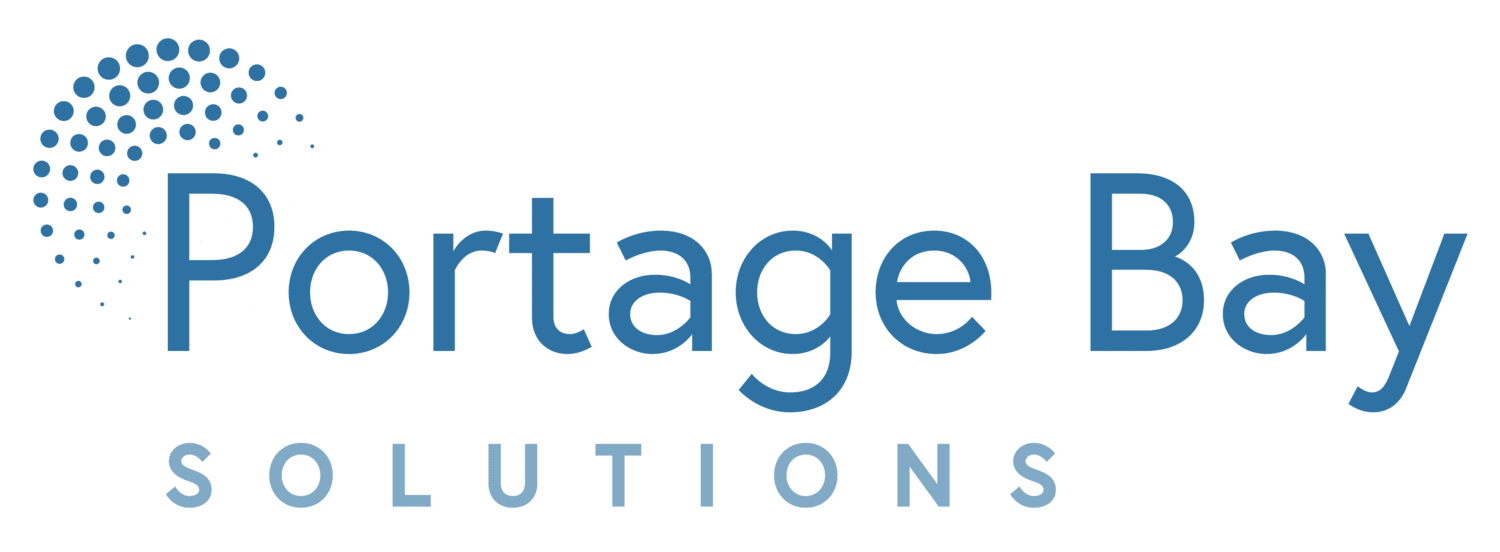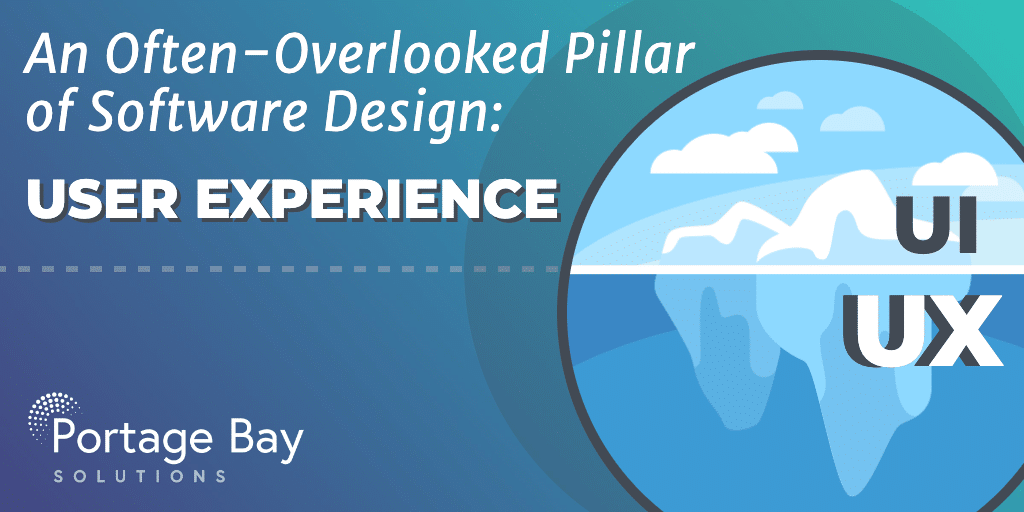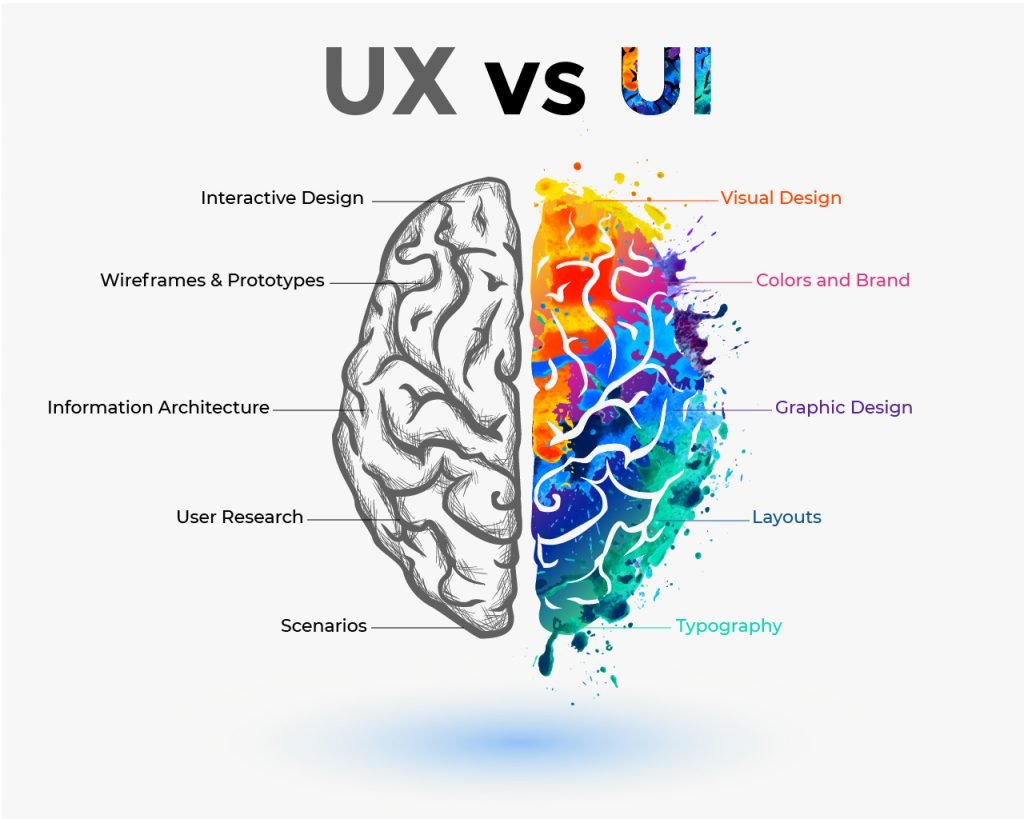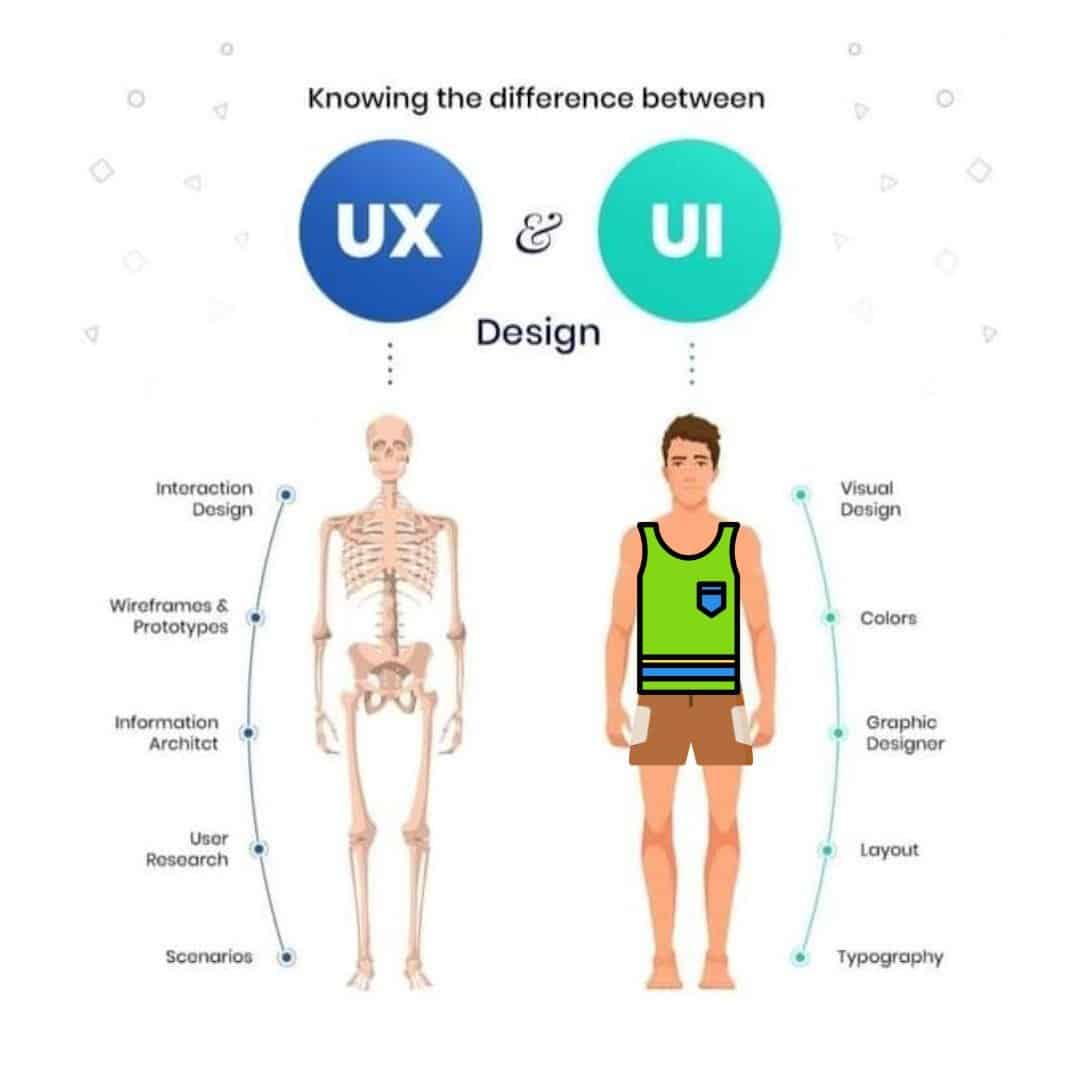Understand That UI And UX Are Two Different Areas
Before understanding the importance of user experience (UX) and user interface (UI) in custom software design, we first need to understand that these concepts – often used interchangeably as UI/UX – are two distinct areas. It is wise to approach the concepts of UX and UI design independently, though they will both be vital to a successful final product.
-
UI refers to the aesthetic elements by which people interact
-
While UX is about the user’s experience with a product or service
In some companies, a designer is responsible for wearing both hats, while in others, there are separate designers for each focus. Regardless of the situation, the ultimate goal of the designer or designers is to create functional, user-friendly, and aesthetically pleasing products.
These illustrations may be a helpful visual delineation of the UX and UI concepts:
Aesthetics is a core UI design principle that defines the pleasing qualities of an item. It can include design assets like icons, buttons, and other visual components, as well as other properties that have balance, color, movement, pattern, scale, shape, and visual weight. The colors, whitespace, font used, and other design components are all part of this area. Many people associate product design with these outward components only – as UI can create visually amazing things! – but the actual user’s experience of the product is also critical.
UX designers spend their time building out the flow and interactions a user might go through to accomplish the desired action. UX has everything to do with mapping the ideal ‘user journey’ for a client and testing to see whether or not a user can successfully utilize the product or navigate an interface naturally and efficiently. The mission is to build a user experience that is simultaneously logical, pleasurable, and easy to use.
User experience emphasizes understanding the best possible solution for user interaction with a product. UX designers research what problems the user has and what the user desires and requires from a solution. Research ensures the best possible outcome with the end user in mind. The UX designer also creates prototypes to perform usability tests with potential users. The importance of feedback is crucial in creating solutions that utilize ’empathetic design,’ or the idea that users, not designers or stakeholders, guide product development and not the other way around.
Incorporating user experiences into a design flow takes client-designer collaboration, user research, and usability testing before entering into a project’s design and development phases. For example, having a conversation and discovery session with potential users to see how they would best use the application, software, or platform adds tremendous value to the process. Empathy for the end user and their needs is at the heart of every good UX design.
“Design is really an act of communication, which means having a deep understanding of the person with whom the designer is communicating.”
Don Norman, Director of The Design Lab at the University of California, San Diego, and often considered the “Father of UX Design.”
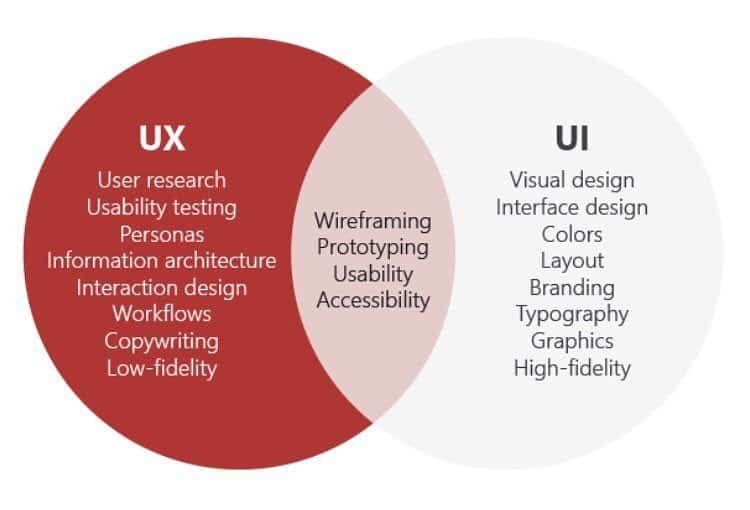
Usability, First And Foremost
When you absorb the quote above, you’ll realize just how crucial proper planning is with UX design. It’s about solving user problems through a streamlined, process-oriented flow. If we don’t advocate for its usage in our software design, for example, then the user could potentially have a tough time with the actions of using the product. Of course, the aim is to create beautiful interfaces. Still, suppose the website isn’t functional or is difficult for the user to navigate. In that case, it will not do any good in achieving the objective set forth by the company stakeholders. For example, a website that looks pretty but does not effectively lead its user to take the intended action.
A designer must consider the end user – the person using the product. Knowing who and how people interact with your digital product is paramount to understanding when looking for usability in product design. Usability refers to how easily a user interacts with a website or product. Whether that takes the form of a tangible object, a website, or a database, great designers ask from the very beginning, ‘Who are we designing for?‘
There’s nothing worse than building a brilliant piece of software or website that is difficult for someone to access and use. Users will likely look for alternate solutions out of frustration, such as finding a different application that better meets their needs. Inaccessibility will force the user to find the path of least resistance. If your product design leaves users frustrated or dissatisfied, they seek alternatives. Ensuring user satisfaction is why designers test early and test often.
User experience encompasses all aspects of the end-users interaction with the company, its services, and its products.
Don Norman, Cognitive Scientist & User Experience Architect
Go Beyond A Logical Approach
Too often, we forget the human aspect when working with technology. We need to take a more natural approach to UX design, which is where empathetic design has merit. It’s a methodology that primarily focuses on the user persona and who will use it daily. It’s about fully understanding how someone wants to use that platform before developing it. So knowing who your audience is – who you are speaking to and designing for – is key.
For UX designers, this means getting into the target user’s mindset by observing, asking questions, and being curious! UX designers have the empathy and curiosity to find a user’s pain points. Pain points include any problems the user may experience along their user journey. It could be like looking for information or a lengthy registration process. This is why it’s critical to have designers working with test users before the development stage even begins.
What Is A Database, And Who Relies On Them?
Databases are a primary component in nearly any type of software application. They are used to house and properly store different data sets that a company may need to collect. Some databases might contain the transactional history of all your clients, while others could keep all the customer information.
Any business collecting information benefits from a properly designed database that handles and manipulates data well. Healthcare is an excellent example of an industry that uses databases extensively, with most healthcare organizations and doctor’s offices now recording their patient information digitally. These massive data centers hold not only the demographic details of each patient but also their histories and results-sensitive data. A great example is healthcare.gov, which uses a database language known as NoSQL (Not Only SQL) to manage and collate all the information.
Claris Filemaker As A Database System
Claris FileMaker Pro is powerful software that creates custom apps and databases. It works seamlessly across iPad, iPhone, Windows, Mac, and the web. The FileMaker platform makes creating the solutions you need for your business easy. Developers can quickly build solutions that include integrated workflow, business logic, searching and sorting, data validation, image, video, and file storage, and integrated relational database capabilities – all without coding.
One reason the FileMaker platform allows for fast and affordable solution development is that it combines user interface design, business logic and automation, and database services into one place. FileMaker Pro uses a graphical user interface with support for drag-and-drop solution creation.
You can customize the look and feel of many aspects of the FileMaker platform – from how your data display appears to how the application interface looks and behaves. Good UI design is baked into the platform allowing for fast custom low-code solutions.
Where Database Developers Often Fall Short
With database design, the task is to develop the best solution to serve a client’s user needs. Often we see poor database design and know instantly that this is because the developers failed to employ standard UX design principles before the actual build. But why would they be expected to? Typically developers are developers and not designers! When the role of designer and developer are combined, the focus tends to be on development over design. Why? The old way of thinking has been, ‘As long as it works.’ But we know this is no longer acceptable.
Users have higher expectations and embrace a new way of thinking – elevating design and accessibility standards. So if your database is clunky, hard to use, or not pretty to look at, you inevitably have a product that doesn’t satisfy and delight the end user. Some people spend their entire day inside an interface and appreciate something user-friendly and visually appealing. Yes. UX designers think about this individual when we create a product, digital, or database design, always with that end user in mind.
The Key Questions Your Database Designer Should Be Asking
Every designer wants to ask the following questions to prepare for the overall design phase. If you are working with a company designing a database, they should be too. Knowing these three basic requirements helps create highly effective, user-friendly database designs.
-
Who is the user?
-
What is the feature?
-
Why is the feature beneficial
The formula UX designers use is commonly known as a user story, and it is one of the first steps in determining a user’s needs related to the product. Thinking about the following statement allows the designer or the stakeholder to express how they would use the database system.
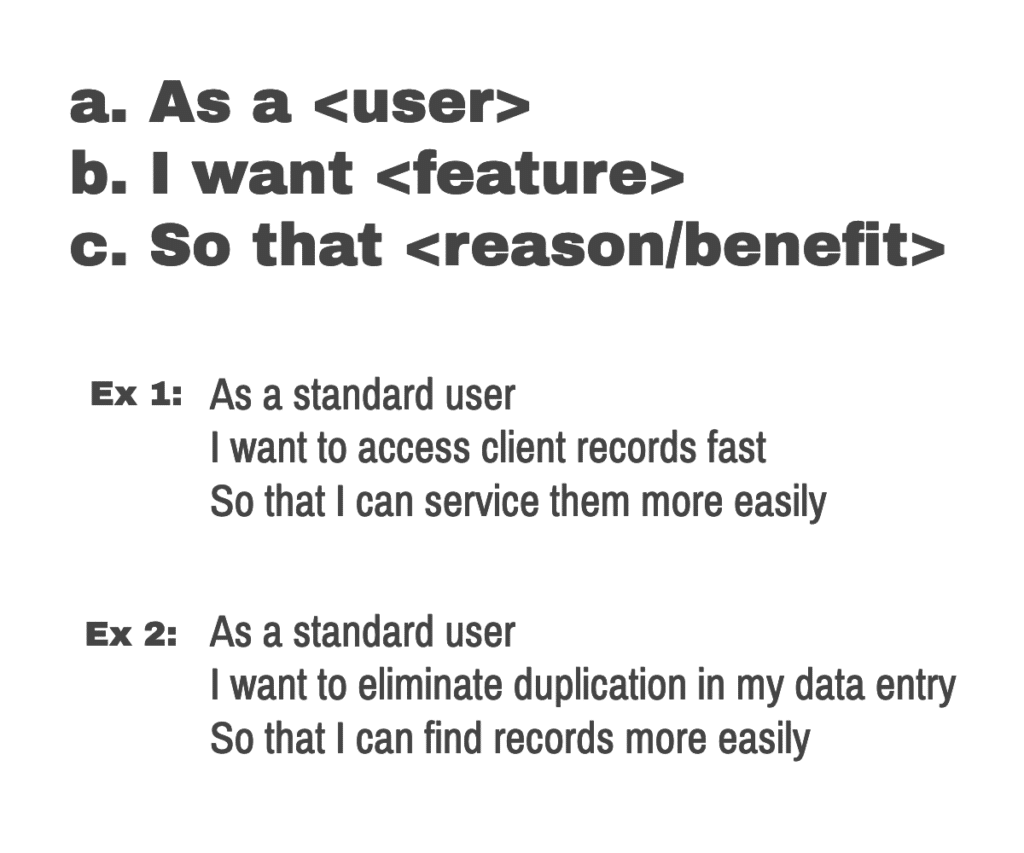
The designer continues through this process – running through different types of users, essential features, and benefits – until confident in articulating the correct user flow and experience for each end user. After all, happier users mean more interaction with the database’s investment! In the end, a dedicated discovery phase is constructive; it will save time and money because the iterative approach allows the designer to arrive at the appropriate user experience.
Good UX database design is also about user variety. For example, a financial planner might want to access payment records for their client, while a customer service agent may need to pull recent purchases for their customer. And the marketing specialist might be interested in digging into customer demographics to see where most of their clients originate.
Bad Database Design vs. Good Database Design
One common complaint about databases is that they are ugly – developers historically have failed to build such systems with design in mind. The programmers who built the solution were technical experts with deep, practical knowledge of various computer languages and systems and knew how to make those systems work as efficiently as possible. But without the design aspect, you have a system that works smoothly internally while potentially causing unneeded headaches for the people using the system.
Both of these programs are robust “beneath the hood” and well-serve the purposes for which they were created. But which one would you, as a staff person, prefer to be looking at and interacting with every workday?
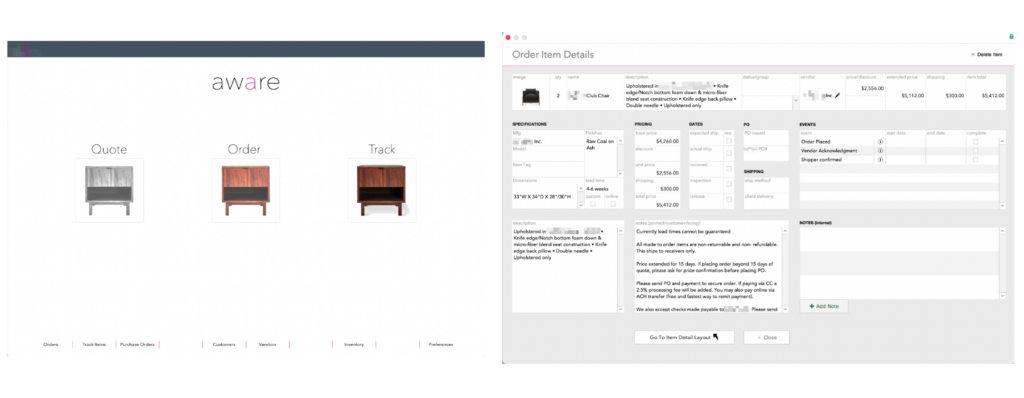
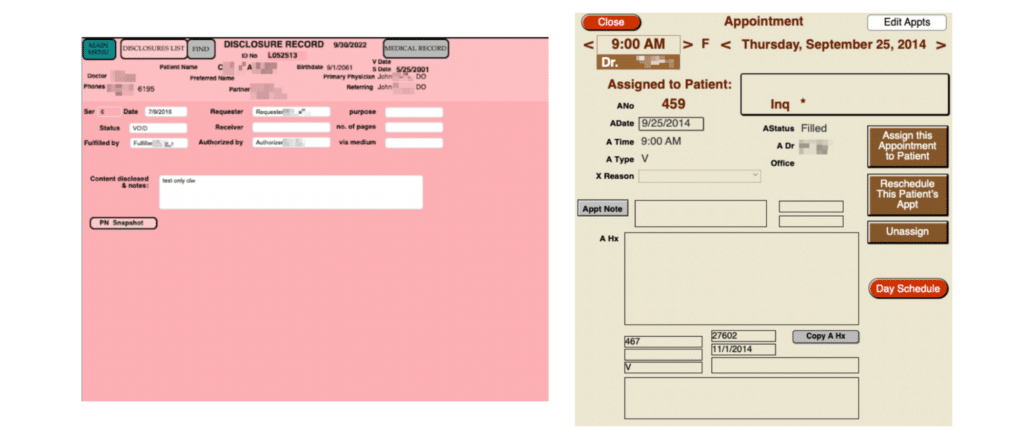
Work With A Design Company That Utilizes Sound UX Principles, In Addition To Elevating UI
It is essential to fill the gap between human experience and technology. Companies that employ sound UX principles in product design consider customers as individuals instead of unknown online users. With UX design, companies can find the perfect balance between meeting human needs and business goals.
As Claris FileMaker certified developers, we specialize in custom software development and like to incorporate an iterative approach from the beginning. We prioritize working with clients on UX database design before starting a project – if that’s important to them. Or many clients choose to trust our experience and instincts for creating a solution that will serve them well and is both user-friendly and aesthetically pleasing. FileMaker makes it easy to create beautiful custom projects for our clients fast without compromising quality.
If you’re ready for a solution that makes sense on day one of its implementations, feel free to contact us to discuss your project needs. We’d be glad to schedule a demo session on what a great software solution should look like and how we can create a user-friendly and beautiful custom solution for you.
——————————–
Image references:
https://softtech.com/resources/a-closer-look-at-ux-and-ui-design/
https://presence.agency/blog/difference-between-ux-ui/
